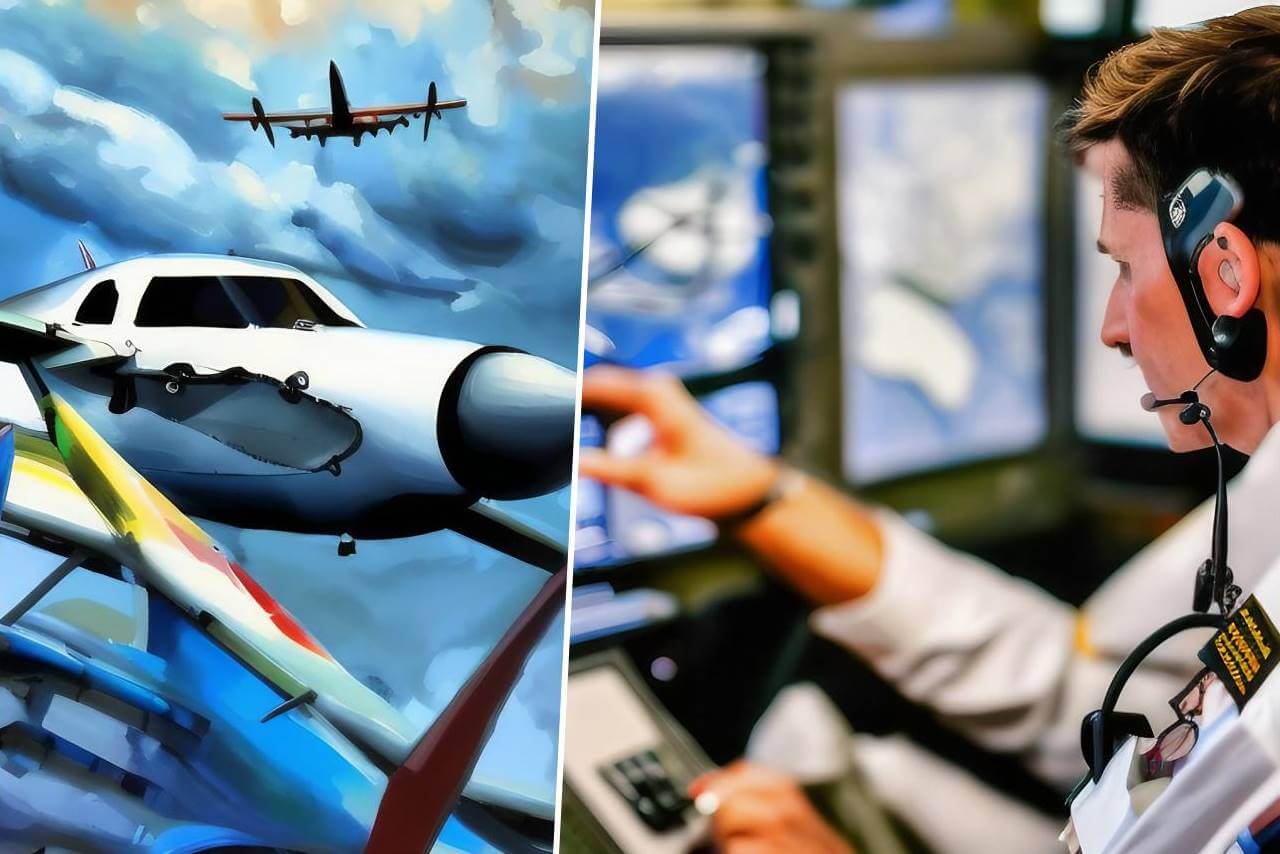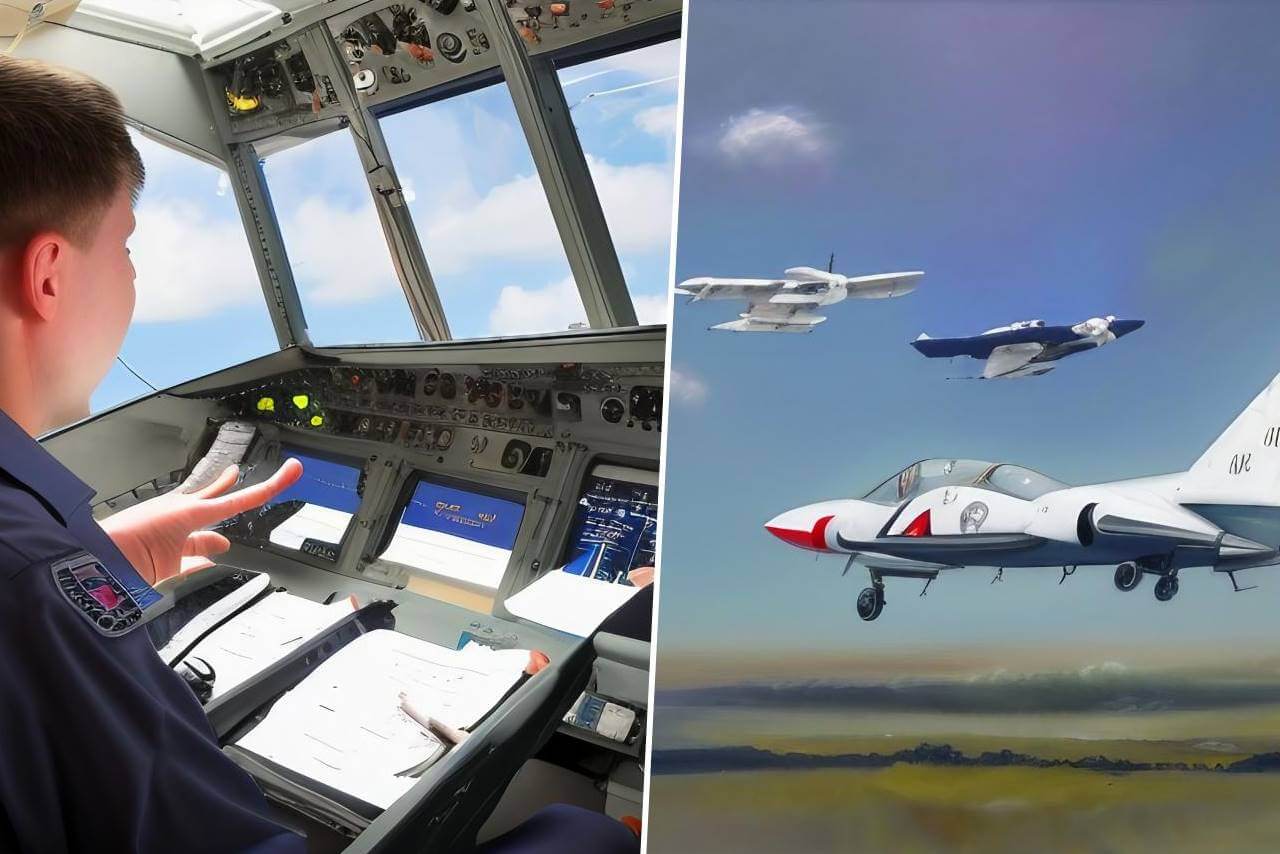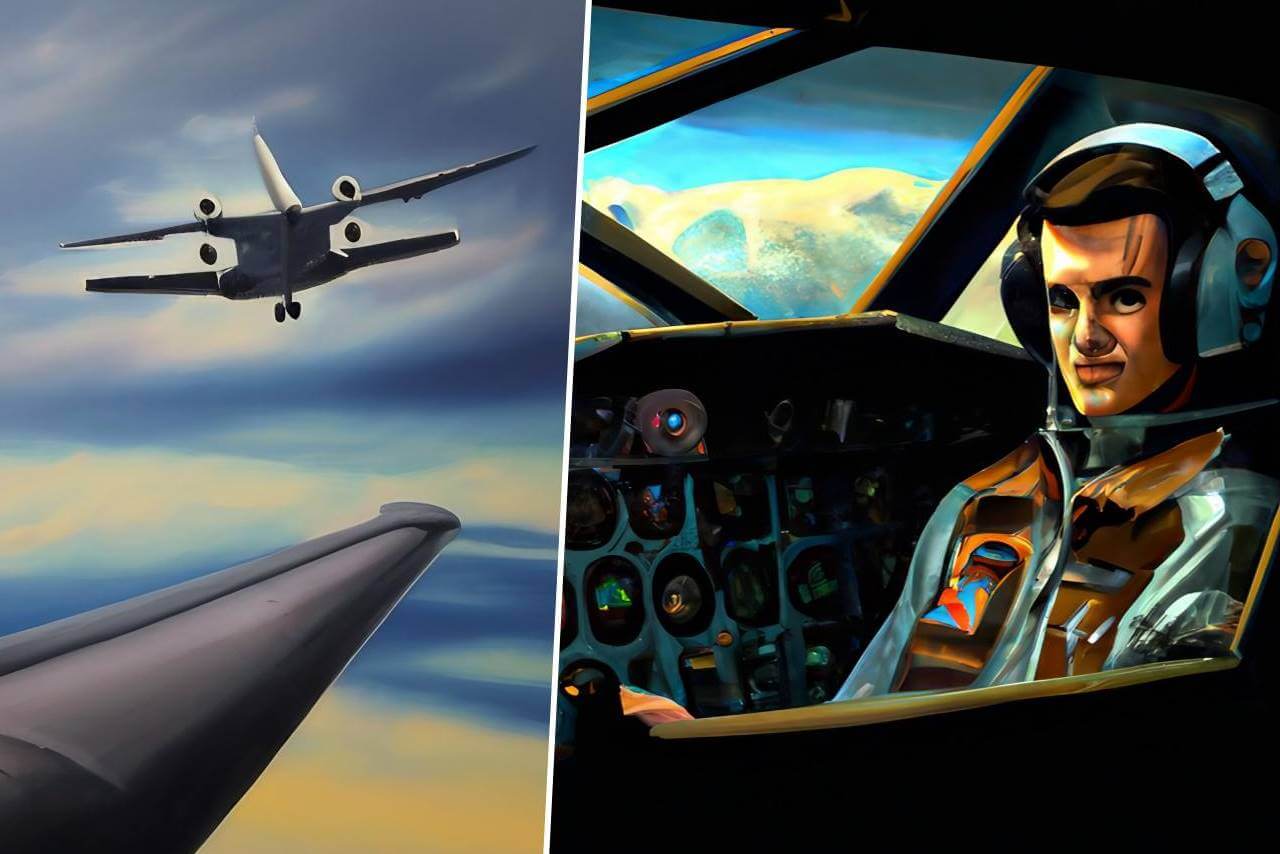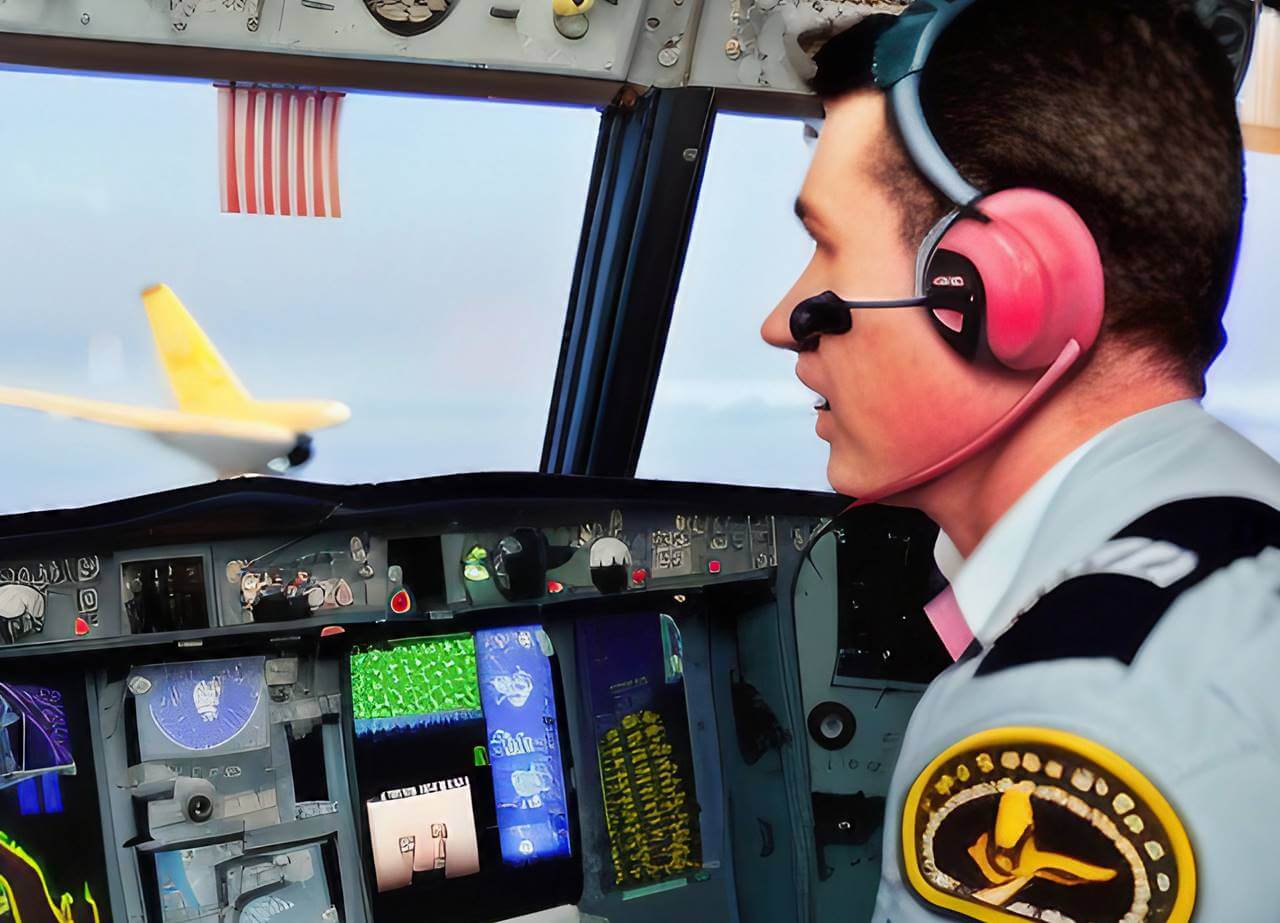Pilot Deviation is an important issue in aviation. It occurs when a pilot deviates from their assigned flight plan, either intentionally or unintentionally, and can have serious consequences for both the pilot and other aircraft in the vicinity. Pilots must always adhere to air traffic control (ATC) instructions and be aware of any potential hazards that could arise due to their actions.
Also Read: Most Popular Pilot Acronyms in Aviation
We will look at what constitutes pilot deviation, why it is dangerous, what the penalties are for failing to comply with ATC instructions, and when you are allowed to deviate from an ATC clearance.
Contents
- What does Pilot Deviation Mean in Aviation?
- Common Deviations and Violations in Aviation
- Common Violations of ATC Instructions
- 10 Reasons why there is a Pilot Deviation Situation
- Scenarios that can occur when there is Pilot Course Deviation
- Penalties for Failing to Comply with ATC Instructions
- The Federal Aviation Administration’s Systematic Enforcement of Pilot Deviations
- How to Avoid Possible Pilot Deviations
- What Does a Brasher Warning Mean?
- Possible Pilot Deviation Statement from ATC
- Pilot Deviation Report
- How to Call the Pilot Deviation Number
- When is it Permissible to Deviate from an ATC Clearance?
- Video: FAA Explains Meaning of Pilot Deviation
- Summary

What does Pilot Deviation Mean in Aviation?
Pilot deviation is an instance when a pilot deviates from their assigned flight path. They “stray from a course”, generally used to describe any deviation of a pilot away from their planned route, regardless of the reason. This can include intentional or unintentional deviations and even minor ones that are done in order to maintain safety.
A pilot deviation is dangerous because it can lead to collisions with other aircraft as well as possibly putting passengers and crew at risk due to unexpected changes in altitude or airspeed. In addition, deviating from an ATC clearance can also result in serious penalties which could include revocation or suspension of their license. As such, pilots must always adhere to any potential hazards that may arise from their actions.
Common Deviations and Violations in Aviation
Here are some ways that a pilot can deviate from their assigned flight plan:
- Operating the aircraft in an area prohibited by the ATC
- Flying in visual meteorological conditions without proper clearance
- Failing to maintain current charts and Authorizations for Special Use Airspace
- Making unauthorized maneuvers such as unusual attitudes or turns
- Performing stunts or other dangerous maneuvers without permission.
Also Read: How Many Passengers Can a Private Pilot Carry?
Common Violations of ATC Instructions
Failing to comply with the instructions of an ATC
- Refusing or neglecting to follow a clearance issued by ATC
- Failing to report position changes and altitude while in flight
- Operating aircraft below the minimum safe altitudes.
The best way to avoid deviations is for pilots to remain vigilant and constantly be aware of their assigned flight path. Additionally, if the pilot is uncertain of a clearance or instruction from ATC, they should request clarification before making any changes to their flight plan. Lastly, pilots should always keep up with current charts and Authorizations for Special Use Airspace so that they are not operating outside of their approved airspace.
10 Reasons why there is a Pilot Deviation Situation
There are a number of causes why a flight deviates from its course. Here are some common ones:
- Poor planning and lack of knowledge about the route and the airspace ahead
- Unexpected weather changes or flight conditions
- Disregarding ATC instructions due to fatigue or stress
- Improper communication between pilot and air traffic control (ATC)
- Equipment malfunction or failure
- Loss of situational awareness
- Failure to follow standard operating procedures
- Pilot error, inexperience, or carelessness
- Unfamiliarity with aircraft systems
- Distractions from passengers, equipment, crew members, etc
Scenarios that can occur when there is Pilot Course Deviation
While there may be a number of reasons why the pilot deviates from a course, the reason why this is a critical issue is that it can lead to collisions with other aircraft. If a pilot deviates from their assigned course, this could put passengers and crew at risk due to unexpected changes in altitude or airspeed. Here are some of the worse case scenarios that can occur due to pilot course deviation:
- Mid-Air Collisions: When two or more aircrafts are travelling in close proximity, it is possible for them to collide with each other due to a deviation from an assigned route or course. This kind of collision is one of the most dangerous and unpredictable aviation accidents and can result in fatalities.
- Loss of Control: When pilots deviate from their assigned course and fail to correct it immediately, they risk losing control over their aircraft which could lead to a crash into the ground or terrain obstacles such as mountains, hills, trees etc.
- Loss of Life: Another serious consequence of pilot course deviation is the potential loss of life due to a crash or collision. This could be due to a mid-air collision, a loss of control over the aircraft, or any other kind of hazard that resulted from the deviation.
- Poor Visibility Conditions: If visibility conditions change due to a pilot’s deviation from the assigned course, other aircrafts in the vicinity may be unable to see them and this could lead to a collision.
- Landing in Wrong Airport: If a pilot deviates too far from their assigned course, they may end up at the wrong airport or airspace which can create confusion and chaos for ATC as well as other pilots in the area.

Penalties for Failing to Comply with ATC Instructions
If an airplane deviates from its assigned course and fails to comply with ATC instructions, there can be serious consequences for both the pilot and other aircrafts in the vicinity. In some cases, it could lead to disciplinary action against the pilot or even criminal prosecution depending on how severe the violation was. Some of these penalties include:
- Revocation or Suspension of Pilot License: If the deviation was due to negligence or recklessness, the pilot could have their license suspended or revoked by the FAA.
- Fines: Depending on the severity of the deviation, it could result in hefty fines imposed by the FAA for failing to comply with ATC instructions.
- Civil Liability: The pilot may be held liable for any damages caused due to their deviation from an assigned course, resulting in a civil lawsuit against them from any affected parties.
The Federal Aviation Administration’s Systematic Enforcement of Pilot Deviations
The Federal Aviation Administration (FAA) has put in place a systematic enforcement program to identify, investigate and take action against pilots who deviate from their assigned courses. This includes random flight checks, investigations into reports of deviations, inspections of aircrafts and interviewing pilots that have been reported for pilot course deviation. Below are the phases:
- The Event – the FAA will identify any pilot deviations from their assigned course, and take action accordingly.
- The Investigation – The FAA will then conduct an investigation into the event to determine whether or not a violation occurred.
- Investigation/Interviewing the Pilot- The FAA can then interview the pilot involved in order to gain more information about the deviation and why it occurred.
- Resolution – The FAA will then evaluate the situation based on its findings in order to determine whether or not a penalty should be imposed.
- Enforcement – In cases of serious violation, the FAA will take enforcement action against the pilot which can range from a warning letter to suspension or revocation of the pilot’s license.
- Appeal – The pilot has the right to appeal any decision made by the FAA if they feel that it was unjustified or unfair.
Also Read: What is a Manifold Pressure in Aviation?
How to Avoid Possible Pilot Deviations
Here are some tips to prevent possible pilot deviations:
- Ensure that you are familiar with all applicable flying regulations and instructions. Make sure to thoroughly review the ATC clearance before starting your flight.
- Prioritize safety above all else in the air. If you feel unsafe or uncomfortable following an ATC instruction, speak up and request clarification or an alternate route that is safer.
- Monitor your aircraft’s performance closely and make sure to adjust as needed to maintain a safe flight path. Pay special attention to weather conditions and turbulence that may affect your altitude or speed.
- Maintain constant communication with ATC throughout the duration of the flight and be prepared to follow their instructions in case of any changes.
- If a deviation is unavoidable, inform the ATC immediately, explain why it is happening, and request permission if necessary before making any changes in course or altitude.
- Take time for proper pre-flight planning and preparation by studying maps, routes, airspace regulations, weather conditions and other relevant information in advance of every flight. This will keep you from getting lost and needing to deviate from your course as much as possible.
- Practice good situational awareness at all times by constantly scanning for other aircraft nearby so you can anticipate potential conflicts ahead of time.
- Brasher warnings from ATC should be taken seriously and should always be followed. If a warning is issued for your flight, pay attention to it and take the necessary steps to avoid any potential issues.
What Does a Brasher Warning Mean?
A brasher warning is an alert that informs a pilot they have committed an error while in the air. It allows pilots to recognize when their actions are taking them out of bounds, and gives them the opportunity to right themselves as soon as possible.
The brasher warning is an aviation term used to remind pilots to exercise caution when navigating in a particular area. It is issued by air traffic control (ATC) when there is potential for aircrafts flying in the area to come into conflict or danger of collision.

Possible Pilot Deviation Statement from ATC
If a pilot’s behavior endangers the safety of flight operations, then it is an air traffic controller’s responsibility to promptly alert the plane crew. In order alert aircraft crews of potential flight deviations, air traffic controllers will employ the phrase for brasher warning
In order to give all parties involved in the incident ample time to assess and ready themselves for a conversation, notifications are usually structured as:
“(Aircraft ID) possible pilot deviation, advise you to contact (name of facility) at (contact number).”
Pilots are granted a window of opportunity, thus ensuring everybody is on the same page. Should you be subject to a warning that is more severe than expected, don’t hesitate to take your time and consider the situation before immediately calling the phone number provided for assistance.
Pilot Deviation Report
A pilot deviation report is a formal document that outlines the details and circumstances of an aircraft or pilot’s deviation from normal operating procedures. It can be issued by ATC, other aviation authorities, or even the pilots themselves in order to alert all parties involved as to what happened in case disciplinary action needs to take place.
How to Call the Pilot Deviation Number
When you receive a brasher warning, it is important to contact the facility or number provided in the notification as soon as possible. Most ATC facilities can be reached by telephone and sometimes require additional information such as aircraft type and flight plan details before proceeding with further instruction.
- When ATC provides you with a phone number to contact, most of the time it will be an experienced supervisor or controller-in-charge.
- Right away they’ll want to know what happened and why this event has caused a need for communication.
- Keep in mind that air traffic controllers are not law enforcement officers and they do not handle violations. If a pilot’s deviation needs investigation or corrective action, it is sent to the Flight Standards Division (FSDO) for further examination.
- Refrain from deceiving the controller or debating with them over the phone, as this will likely result in a referral to FSDO. Even so, it is alright to explain yourself without getting confrontational.
- The air traffic agent on the other end of your call will attentively listen to your narrative, recognize why what you did was an issue, and advise how best to avert it in future.
- ATC won’t bother the Flight Standards District Office (FSDO) with trivial issues. As a student pilot, let them know from the start; this will result in more leniency when they interact with you.
However, if you choose to fly in restricted airspace without clearance and cause an airliner to be alerted by the Traffic Collison Avoidance System (TCAS) because your aircraft was too close – then there could be serious repercussions.
When is it Permissible to Deviate from an ATC Clearance?
In some cases, a pilot may need to deviate from an ATC clearance for safety reasons. For example, if the weather has become too severe or an emergency situation arises, then a pilot may need to deviate from the course in order to ensure the safety of their passengers and crew. In such cases, it is important for the pilot to communicate their intentions with ATC as soon as possible and to follow all necessary procedures that have been established by the FAA.
Video: FAA Explains Meaning of Pilot Deviation
Here’s a video below where the U.S Federal Aviation Administration (FAA) explains what Pilot Deviation Safety is, and why it’s important for pilots to adhere to safety protocols at all times.
Taking a moment to emphasize safety, it’s important to discuss pilot deviations. On average, thousands of safe and successful flight operations are conducted over the United States each day yet on some days this number can exceed 100 deviations from standard operating procedure.
In other words, pilots who are not following ATC instructions or published procedures, or flying in unauthorized airspace—these all fall under the umbrella of pilot deviations (PDs). Unfortunately, these types of PDs occur most often during general aviation operations. None of us wants to hear this phrase and we don’t take flight with the goal to deviate from regulations.
Luckily, staying away from PDs is absolutely effortless; just follow these three easy steps!
1. Prior to your flight, be sure to thoroughly plan it out; no matter if you’ve done this a hundred times before or not! Be mindful of the airspace that you’ll need authorization for and keep tabs on any temporary flight restrictions in or near your route. Have an alternate plan ready just in case there are issues with securing authorization as well.
If you’re on an IFR plan, talking and squawking is inevitable. For VFR plans, requesting flight following will provide added surveillance from an external source- a great asset when flying in intricate airspace!
3. Remain cautious and give yourself some extra room in the airspace. Pilots nowadays rely on a variety of GPS mapping systems, so it’s possible that your current location could be slightly different than what the airspace controller sees on their radar display. It is advisable to maintain a gap of one or two miles between you and any airspace which needs avoiding in order to remain safe and alert during flight operations

Frequently Asked Questions
1. What is Pilot Deviation?
Pilot Deviation (PD) is the deviation from standard operating procedures, ATC instructions, or unauthorized airspace by a pilot. This can include not following flight plans, not following the regulations of controlling agencies, or not adhering to altitude regulations. This type of deviation most often takes place during general aviation operations.
2. Why is it important for pilots to adhere to safety regulations?
It is important for pilots to adhere to safety regulations in order to reduce the risk of accidents or mid-air collisions. Following standard operating procedures and ATC instructions will help ensure that the flight is conducted safely and without any issues. Additionally, flying in unauthorized airspace can result in legal repercussions and violation of international aviation laws.
3. What should I do if I need to deviate from my course?
If a deviation is unavoidable, inform the ATC immediately, explain why it is happening, and request permission if necessary before making any changes in course or altitude. Priority should be given to maintaining
4. What happens if a pilot deviates during flight?
If a pilot veers off course while flying, they may be subjected to heightened scrutiny or retribution from the Federal Aviation Administration (FAA). Their license could potentially be suspended or revoked and other legal ramifications might also arise.
5. What is the penalty for pilot deviation?
When a regulation is broken, the perpetrator could be left unpunished or receive a reprimanding notification. Additionally, their certificate rating score (a ‘709’ ride) may take points off or worse – have their certification suspended and revoked altogether.

Summary
Pilot Deviation (PD) is the act of not following standard operating procedures, ATC instructions or unauthorized airspace by a pilot. This type of deviation most often takes place during general aviation operations and can lead to potential accidents or mid-air collisions. It is important for pilots to adhere to safety regulations in order to reduce risk maintain legal compliance.
If a deviation is needed, inform the ATC immediately and request permission if necessary before making any changes in course or altitude. Penalties for violating regulations may include receiving notifications from the Federal Aviation Administration (FAA), having points taken off their certificate rating score, or even suspension and revocation of their certification altogether. Following regulations will help ensure safe flight operations in all situations.
Disclaimer: Information posted here should be used as a reference only. The information provided here is not meant to be used as professional advice. Always refer to appropriate regulations and seek the help of experts before making decisions related to aviation.